A Patient With Newly Diagnosed, Advanced EGFR-Mutated Non–Small Cell Lung Cancer
A 40-year-old woman presented with a productive cough and shortness of breath that limited her regular activities. Her past medical history was relevant for hypertension since 2016; it is well controlled and treated with enalapril 5 mg twice daily. She also revealed a past wood smoke exposure of 2 hours per day for 10 years during her childhood.
Figure 1 Initial Thoracic Computed Tomography
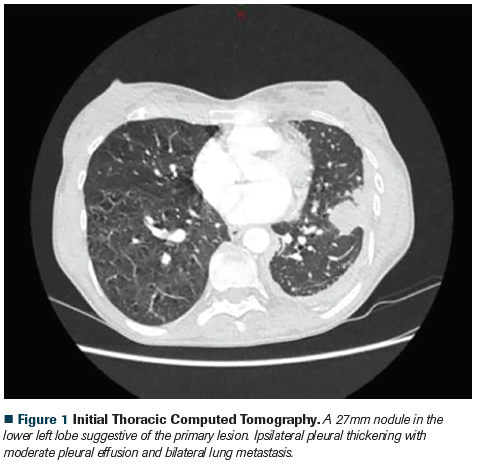
TABLE 1 Oncological outcomes of first and second-generation TKI´S studies in the first-line setting compared with chemotherapy.
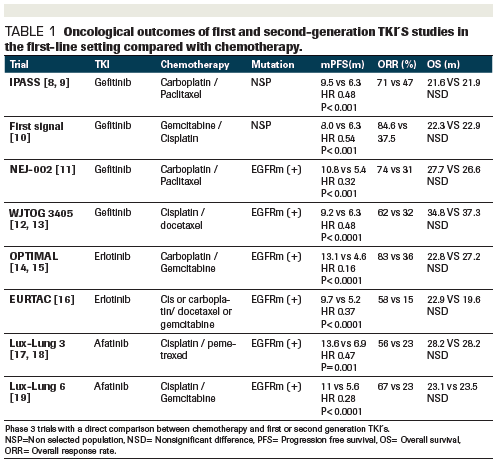
Figure 2 Initial central nervous system MRI
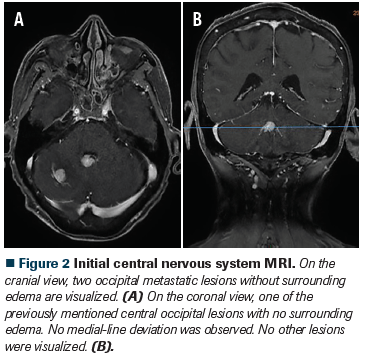
Figure 3 Pathology images
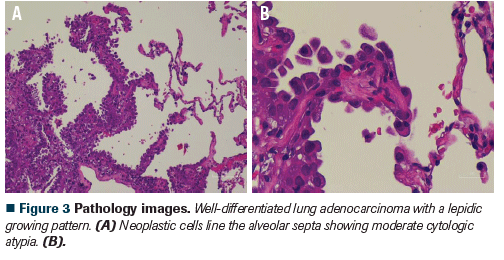
TABLE 2 PFS & OS depending on initial therapy in EGFR mutated NSLC (mos)
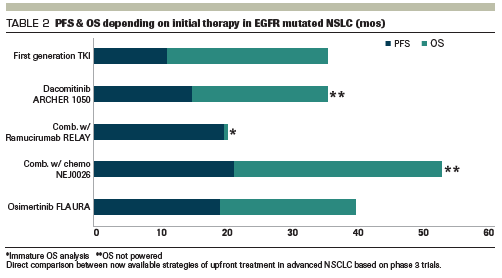
Figure 4 Evaluation of response. Thoracic Computed Tomography
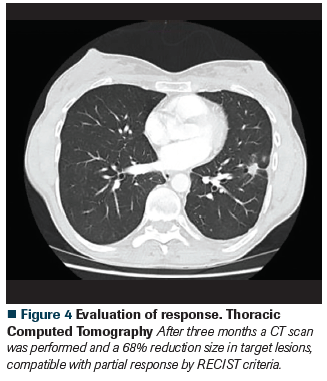
Figure 5 Evaluation of response. Central nervous system MRI
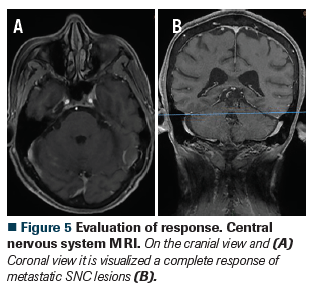
THE CASE
A 40-year-old woman presented with a productive cough and shortness of breath that limited her regular activities. Her past medical history was relevant for hypertension since 2016; it is well controlled and treated with enalapril 5 mg twice daily. She also revealed a past wood smoke exposure of 2 hours per day for 10 years during her childhood.
A chest computed tomography (CT) scan was performed which showed a 30-mm lung nodule in the lower left lobe and mediastinal and ipsilateral pleural thickening with moderate pleural effusion and several bilateral lung metastases. The patient underwent a CT-guided lung biopsy. The pathology evaluation revealed a well-differentiated lepidic lung adenocarcinoma (positive for cytokeratin 7, thyroid transcription factor 1 , and napsin A). Brain magnetic resonance imaging with contrast revealed the presence of 2 occipital metastatic lesions without surrounding edema. She denied headaches, nausea, vomiting, visual alterations or focalization symptoms.
A mutational profile was performed and was positive for the presence of an epithelial growth factor receptor (EGFR) mutation (exon 19 deletion).
Based on the most recent data, which of the following would be the best initial therapy for this patient?
A. First-generation EGFR tyrosine kinase inhibitor (TKI; erlotinib or gefitinib)
B. Dacomitinib
C. Osimertinib
D. Combination therapy with gefitinib and platinum-based chemotherapy
E. Combination therapy with erlotinib and ramucirumab
CORRECT ANSWER: C. Osimertinib
Discussion
Lung cancer remains the most common malignancy (11.6% of all cases) and the leading cause of cancer deaths worldwide (18.4%).1 Non–small cell lung cancer (NSCLC) accounts for approximately 80% to 90% of lung cancer cases, and adenocarcinoma has become the most predominant histotype (45%-55%).2 The discovery of activating mutations in the EGFR gene led to the development of TKIs and resulted in a paradigm shift in the treatment strategy. The EGFR gene comprises 28 exons, but activating and sensitizing mutations occur in exons 18 through 21, which encode the site for adenosine triphosphate binding within the tyrosine kinase (TK) domain. Somatic activating mutations in the TK domain of EGFR act as oncogenic drivers leading to ligand-independent activation of receptor downstream signaling, favoring cell proliferation, survival, and cell migration.3
EGFR oncogenic mutations were found in 32.4% of cases of NSCLC from the worldwide population.4 Nonetheless, many studies have demonstrated marked variations in prevalence depending on ethnic races. EGFR mutations were reported in approximately 10% to 15% of the Caucasian population and nearly 50% of Asian patients with advanced NSCLC.5
Three generations of TKIs are approved for frontline treatment in this group of patients based on multiple studies which demonstrated considerable superiority in progression-free survival (PFS) and overall response rate (ORR) with a decrease in the toxicity profile compared with chemotherapy. Answers A and B referred to first and second-generation TKIs that have demonstrated a favorable PFS and an important ORR in numerous phase III trials compared with the historic standard of care (SoC)-chemotherapy (Table).8-19 Furthermore, these TKIs were associated with lower rates of adverse events (AEs) and better symptom control. Despite a remarkably high ORR of approximately 60% to 75% to such treatments, all patients will develop secondary resistance, with average median PFS ranging from 9 to 15 months. Additionally, none of the first-generation TKIs have proved an overall survival (OS) benefit, so answer A is not the best answer with the available information.
Particularly focusing on answer B, second-generation TKIs (afatinib and dacomitinib) have also demonstrated a PFS advantage compared with chemotherapy and first-generation TKIs in the first-line setting (Figure).18,20-23 These drugs are irreversible inhibitors forming covalent bonds with the kinase domains of EGFR and other human epidermal growth factor receptor family receptors. The first head-to-head comparison between 2 TKIs was conducted in the LUX-Lung 7 trial, a phase IIB study, in first-line advanced EGFR-mutated patients (Del19 or L858R only), that assessed afatinib versus gefitinib. The primary outcome was median PFS, so the study did not have enough power to demonstrate an overall survival difference. Approximately 15% of patients in both arms had controlled brain metastasis before randomization. The median PFS was marginally better in the afatinib arm, 11.0 versus 10.9 months (hazard ratio [HR], 0.73; 95% CI, 0.57-0.95; P = .017), but it was not clinically meaningful.24 Even though the ORR was higher in the afatinib arm (70% vs 56%; P = .0083), differences in median OS for both arms were not significant, 27.9 months in the afatinib arm versus 24.5 months in the gefitinib arm.25 Grade 3 to 4 AEs were more common with afatinib than gefitinib, especially rash or acne (9% vs 3%) and diarrhea (13% vs 1%), respectively. Also, a higher rate of serious AEs occurred (11% vs 4%) in the afatinib arm.24 One of the greatest drawbacks of this study was the marginal benefit in PFS at the cost of increased toxicity, so in general, afatinib is not considered a better option compared with a first-generation EGFR-TKI.
Another head-to-head comparison was the ARCHER 1050 study. This phase III trial performed in Asia and some countries in Europe compared dacomitinib with gefitinib in EGFR-mutated naïve patients with advanced NSCLC. Results demonstrated a PFS benefit of 14.7 months versus 9.2 months (HR, 0.59; 95% CI, 0.47-0.74; P <.0001) favoring dacomitinib, but a nonsignificant difference in ORR of 75% versus 72% (P = .4234), respectively.26 An update at 31.3 months follow-up reported a median OS of 34.1 months versus 26.8 months (HR, 0.76; 95% CI, 0.582-0.993; P = .0438) favoring dacomitinib.20 At the European Society of Medical Oncology (ESMO) Asia 2019 Congress, OS data were updated with a cutoff in May 2019 and the differences were maintained over time. Moreover, it is important to highlight that patients with brain metastases were excluded from the study even if they were adequately treated before randomization. Consequently, patients included in the ARCHER 1050 study had a better prognosis than those in the LUX-Lung 7 study. The exclusion of this population may limit the applicability of these results in real-world practice where brain metastases are common in this population. Brain metastasis as the main site of progression occurred in 1 patient in the dacomitinib arm while 11 patients were affected in the gefitinib arm, suggesting a protective effect in with dacomitinib. Noteworthy, this was not a preplanned analysis and a small number of patients were involved. Further studies are necessary to establish the CNS activity of dacomitinib.
Less than 50% of patients in the dacomitinib arm received second-line treatment and chemotherapy was the most prescribed therapy in less than one-third of patients. Few patients in both arms received osimertinib, 9.7% in the dacomitinib group and 11.1% in the gefitinib group. Median OS was 36.7 months in the group of patients who received dacomitinib followed by osimertinib, the ideal sequence in patients who started with a second-generation TKI. Thus, the results should be interpreted with caution considering the low number of patients that underwent the ideal sequence, as AURA3 study results do not represent the real-world practice nowadays. Noteworthy, the percentage of patients who developed an EGFR T790M mutation was not reported in ARCHER 1050.
On the other hand, tolerability is essential for any treatment, and dacomitinib was often associated with significantly more toxic AEs than gefitinib. Grade 3 to 4 AEs were 53% with dacomitinib versus 32% with gefitinib; AES of note with dacomitinib were dermatitis acneiform (14%), diarrhea (8%) and paronychia (7%). Serious AEs were twice as high with dacomitinib compared with gefitinib (9% vs 4%) and 2 treatment-related deaths occurred in the dacomitinib group. Dose reductions (66% vs 38%), temporary discontinuations (78% vs 54%) and permanent discontinuations (10% vs 7%) were more common with dacomitinib than gefitinib, respectively. Finally, among the 66% of patients given dacomitinib who needed a dose reduction, almost 30% of them received the lowest permitted dose of 15 mg per day.26 Surprisingly, results from a subanalysis presented at the ESMO Asia Congress 2019, revealed that the best OS outcomes occurred in the populations who received the lowest doses. The exclusion of patients with CNS disease, limited access to second-line treatment in more than a half of the patients, and remarkable toxicity and low tolerability with the initial dose does not support dacomitinib to be the best available option. Thus, answer B is not the best considering the CNS affection in our clinical case.
Some physicians have argued the benefit of combination strategies, answers D and E. First-generation TKIs (gefitinib with pemetrexed-based chemotherapy and erlotinib with an antiangiogenic) represent the most robust available information of combination treatments in the first-line setting. In a preclinical study, simultaneous treatment with gefitinib and pemetrexed favored cell growth inhibition, death, and prevented the appearance of resistance mediated by the EGFR T790M mutation.27 Moreover, it appears that combination therapy prevents epithelial-to-mesenchymal transition, suggesting a positive synergistic effect on the tumor´s microenvironment. In another study, thymidylate synthase levels were decreased with the use of an oral TKI, which may enhance pemetrexed efficacy.28
NEJ009 was an Asian, open-label, phase III trial, that evaluated the efficacy of gefitinib, carboplatin, and pemetrexed (GCP) for up to 6 cycles followed by pemetrexed and gefitinib maintenance versus gefitinib alone in 345 patients harboring EGFR-activating mutations (del19, L858R, and uncommon mutations). A total of 25% of patients with asymptomatic brain metastases were included in this analysis. Median PFS, progression-free survival following initiation of second-line therapy (PFS2), and OS were analyzed as primary end points according to a hierarchical sequential testing method. Median PFS was superior in the combination arm, with an absolute benefit of 9 months (20.9 vs 11.9 months) (HR, 0.493; 95% CI: 18.0, 24.2; P <.001). The ORR rate was significantly higher in the combination group (84% vs 67%; P <.001) with complete responses of 4%. PFS2 showed a nonsignificant difference (20.9 vs 18.0 months; HR, 0.81; P = .092). Even though median OS was much longer in the combination arm (52.2 vs 38.8 months; HR, 0.722; P = .021), the study was not sufficiently powered to test these differences. In general, this combination strategy was much more toxic than gefitinib alone. The rate of grade 3 to 4 AEs with the combination was more than double that with gefitinib (65% versus 31%) and one death was reported associated with combination treatment.29 Osimertinib was received as a second-line treatment in 19% of the patients in the overall population, 23% in the gefitinib arm and 22% in the combination arm. The long-term quality of life analyses was not different, even after 36 months of follow-up.30
An Indian phase III study evaluated the same combination (GCP vs gefitinib alone) in patients with advanced NSCLC harboring an EGFR-sensitizing mutation (Del19, L858R, and exon 18 mutations). Chemotherapy in the combination arm was administered for 4 cycles followed by maintenance pemetrexed and gefitinib until progression. A total of 18% of patients had brain metastases and 21% had a performance status of 2. The radiologic response rate was superior in the combination group (75% vs 63%) (P = .01), almost reaching 3% of complete responses. The estimated median PFS and PFS2 were doubled in the combination therapy arm, 16 months versus 8 months (HR, 0.51; 95% CI, 0.30 to 0.66; P <0.001) and 23 months versus 14 months (HR, 0.69; 95% CI, 0.53 to 0.92; P <.001), respectively. Also, median OS was not reached in the combination group, it was estimated to be significantly longer compared with gefitinib monotherapy (17 months; HR, 0.45; 95% CI, 0.31 to 0.65; P <.001). Additionally, the rate of grade 3 or higher AEs was 75% versus 49% in the combination arm and gefitinib arm, respectively, and serious adverse events occurred in 50.6% versus 25.3% (P <.001).31 Quality of life reports are not presented in this publication and will be reported in the future.
The combination strategy with gefitinib and chemotherapy emerged as an interesting frontline strategy based on the PFS and OS outcomes that consistently demonstrated a delay in the appearance of secondary resistance. However, these findings need to be explored in a future confirmatory analysis. A considerable limitation of these studies is that the strongest evidence comes from specific populations, Asians and Indians, respectively. In the case of the Indian study, the evidence came from a single institution, so extrapolation of this benefit to other races is not be advised. Until now, we did not have a clear OS benefit with the combination strategy of chemotherapy and a TKI. Premature results need to be confirmed from the Indian study with a longer follow-up. Additionally, the NEJ009 study is a negative trial for OS based on its hierarchical design. Moreover, the Indian study showed a median PFS and OS inferior to that of historical records in previous trials with gefitinib monotherapy in first-line setting. The study investigators justify these results with the inclusion of patients with more aggressive disease, including 18% of patients with brain metastases and 21% of patients with a performance status of 2. A higher toxicity profile must be assumed with a combination strategy. The rate of grade 3 or higher AEs was higher in the combination arm, especially hematologic toxicities. More multicentric clinical trials are needed to clarify the role of combination therapy with chemotherapy and a TKI, so answer D cannot be considered as the correct answer with the available information.
Preclinical studies have demonstrated increased signal transducer and activator of transcription 3 (STAT3) mediated by interleukin-6 in NSCLC with both activating-EGFR and T790M mutations. STAT3 has been correlated with an upregulation of VEGF expression by an independent way of the mitogen-activated protein kinase and AKT pathway.32 Thus, there is good rationale to try a combination therapy in EGFR-mutated NSCLC with an antiangiogenic. A European phase II study (BELIEF) reported a median PFS in the whole cohort of 13.2 months with the combination of erlotinib and bevacizumab (E+B) at a 15 mg/kg dose. The study met its end point only in the pretreatment T790M mutation-positive population, with a median PFS of 16 months compared with 10.5 months in the T790M-negative patients (HR, 0.52; 95% CI, 0.30-0.88; P = .016). Patients with CNS metastases were not allowed in the study.33
The first phase III trial to evaluate the combination of erlotinib with bevacizumab compared with erlotinib monotherapy was NEJ026, a Japanese, open-label trial in patients with EGFR-mutations (del 19 and L858R). The median PFS benefit in the first interim analysis (16.9 vs 13.3 months; HR, 0.605; 95% CI, 0.417- 0.877]; P = .016) favored the combination arm. The ORR was not different between strategies (72% vs 66%; P = .31). Noteworthy, 88% and 46% of grade 3 or higher AEs occurred in the combination and monotherapy groups, respectively.21
The RELAY study is a worldwide, phase III trial designed to explore the combination of erlotinib and ramucirumab versus erlotinib alone in the EGFR-mutated (del19 or L858R) population. Patients with brain metastases were excluded from the study. Median PFS was considerably higher in the combination group compared with erlotinib alone, 19.4 months versus 12.4 months (HR 0.59; 95% CI, 0.46-0.76; P <.0001). ORR was similar between groups, 76% with ramucirumab plus erlotinib and 75% with erlotinib alone. OS analysis was immature at data cutoff. More than half of the patients per arm received subsequent medication. An increase in grade 3 to 4 AEs and serious AEs predominated in the erlotinib and ramucirumab arm compared with the erlotinib arm (72% vs 54%). The most common grade 3 to 4 AEs in the combination group were hypertension (24%) and dermatitis acneiform (15%). Serious AEs were more common in the combination arm compared with erlotinib alone (29% vs 21%) and 1 treatment-related death occurred in the combination group.22
Considerable toxicity is a major problem with combination therapies and is was common in the 5 studies previously mentioned. Both combination strategies (chemotherapy and antiangiogenic combinations) are pendant from a quality of life analysis, which should be considered, based on the approval of other options with much fewer adverse events. Despite the exciting results in the RELAY study, patients with brain metastases were excluded and the benefit cannot be extrapolated to the real-world population. Presence of CNS metastases is an adverse prognostic factor, thus this trial may have been enriched with patients with a better prognosis. A longer follow-up is needed than in the RELAY study for the combination of erlotinib and ramucirumab to be considered a standard of treatment. Nevertheless, the improvement in terms of PFS, especially for the L858R-mutated population, is noteworthy. This mutation is historically associated with poorer outcomes compared with the exon 19 deletion. A resistance mechanism after combination therapy is not well defined, but the number of patients with a T790M mutation after progression was similar between groups in the RELAY study. More multicentric evidence is necessary, ideally, to make head-to-head comparisons with a third-generation TKI (eg, osimertinib), which recently demonstrated an OS benefit compared with a first-generation EGFR-TKI (gefitinib or erlotinib) with an improvement in the toxicity profile. In conclusion, Answers D and E are not the best options with the available information.
Osimertinib is a third-generation EGFR-TKI that binds selectively and irreversibly to the tyrosine-kinase domain (C797 residue), blocking the downstream proliferation signal. Osimertinib inhibits both EGFR-TKI-sensitizing and T790M resistance mutations and has shown efficacy in patients with CNS metastases. Osimertinib was approved based on data from the AURA3 trial, in the second-line setting after progression with a first-generation TKI (gefitinib or erlotinib), exclusively in the EGFR-mutated population with the T790M positive mutation. Median PFS was longer in the osimertinib group compared with the platinum-based chemotherapy group, 10.1 months versus 4.4 months (HR, 0.30; 95% CI, 0.23-0.41; P <.001), with an absolute benefit of 5.7 months.34 Recently, at the ESMO Asia Congress 2019, OS results did not confirm the PFS benefit seen in the first publication. The median OS in the osimertinib group was 26.8 months compared with 22.5 months in the chemotherapy group (HR, 0.87; 95% CI, 0.67-1.12; P = .227). The percentage of patients who crossed over to osimertinib as a third-line therapy was 86% of those randomized to the chemotherapy arm. Meanwhile, 59% of patients in the osimertinib arm received a third-line therapy; for most of them (65%), chemotherapy was the preferred line.
Subsequently, the FLAURA trial evaluated osimertinib in the first-line setting in patients with EGFR mutation-positive (exon 19 deletion or L858R) advanced NSCLC. Osimertinib demonstrated a greater benefit in terms of median PFS compared with a first-generation EGFR-TKI (erlotinib or gefitinib) (18.9 vs 10.2 months; HR, 0.46; 95% CI, 0.37-0.57; P <0.001). This difference was significant independent of other clinical factors (eg, EGFR mutation, CNS disease, race, or age).35 No significant difference in ORR was observed but it was numerically higher in the osimertinib arm (80% vs 76%). The median OS was presented at the ESMO Congress 2019, and the median OS was 38.6 months in the osimertinib group and 31.8 months in the comparator group (HR, 0.799; 95.05% CI, 0.641-0.997; P = .0462), an absolute benefit of almost 7 months.23 Moreover, osimertinib was well tolerated, with fewer grade 3 or higher AEs compared with first-generation EGFR-TKIs (42% vs 47%), the most common being rash, diarrhea, and dry skin. Rates of drug interruptions, drug reductions, and permanent discontinuation of treatment because of AEs were very similar between the groups.23
It is noteworthy that among all the patients who underwent randomization, 31% of patients in FLAURA study did not receive a second-line treatment in the osimertinib group and 30% in the comparator group, most of them because of deaths in approximately 22% of patients in both groups. In real-world data presented at the ESMO Congress 2019, about 25% of patients died without receiving subsequent therapy after progression with a first- or second-generation EGFR-TKI. These data were supported last year in the Flatiron Health electronic health records database, where 22% and 40% of patients died before receiving a second- or third-line treatment, respectively.36EGFR T790M mutation is the most common mechanism of acquired resistance for a first- or second-generation EGFR-TKI in 50% of the patients, whereas MET amplification, human epidermal growth factor receptor 2 amplification, and small cell transformation occur less frequently.37 As a result, one-third of the patients who started with a first- or second-generation EGFR-TKI and develop a T790M mutation will be candidates to receive the best drug in this scenario. For a majority of patients, the first-line option would be the only shot they have in the course of their disease, supporting the idea to use the best drug as an up-front treatment.
Referring to second-line treatments, 48% of patients in the osimertinib group and 65% in the comparator group received subsequent therapy. Chemotherapy was the most frequent second-line treatment in the osimertinib group (68%). Otherwise, osimertinib was administered to 27% of the those who received a subsequent treatment in the comparator group (65% of patients). Thus, just 17.5% of the total cohort in the comparator group received osimertinib as a first subsequent therapy.23 This percentage of osimertinib crossover in the first subsequent therapy was less than expected, considering the historical one-third of patients that develop a T790M mutation and receive osimertinib as a second-line treatment. Nevertheless, the investigators argued a 31% crossover considering the additional number of patients who received osimertinib as a second subsequent anticancer therapy.
Many questions remain to be solved. One is the biological response of the tumor microenvironment and clinical behavior (secondary resistance to osimertinib) after first-line osimertinib. Plasma genotyping analyses have highlighted differences in the frequency and preponderance of resistance mechanisms depending on the line of osimertinib therapy, underlying the discrepancies in selection pressure and clonal evolution. Approximately 15% of patients will develop MET amplification as the most common resistance mechanism for osimertinib in the up-front setting. Meanwhile, C797S mutation is the most common when osimertinib is followed by a first- or second-generation TKI.37 In a FLAURA post-progression analysis at the first data cutoff, 26% of patients had second progressions. The median PFS2 was not reached in the osimertinib arm and it was 20 months in the SoC EGFR-TKI (HR, 0.58; 95% CI, 0.44-0.78; P = .0004), suggestive of no aggressive biological change or resistance to subsequent therapies that would lead to rapid disease progression.38
Brain metastases are a poor prognostic factor in the course of the disease, and it is known to confer a deterioration in the quality of life. Particularly in EGFR-mutated patients, the CNS is involved in 20% to 25% of patients at the diagnosis of advanced disease.39 However, CNS progression occurs in approximately 35% to 50% of patients treated with a first- or second-generation EGFR-TKI.40 Data from preclinical and large-scale studies support the ability of osimertinib to cross the blood-brain barrier and penetrate CNS.41 In a pooled analysis of data from 2 AURA (extension trial and phase 2 trial) studies the ORR was 59% in patients with CNS involvement, with a median PFS of 8.2 months versus 12.4 months in those without brain metastases.42 The AURA 3 study randomized 34.5% of patients with CNS metastases. In those with CNS involvement, the ORR was 7% and the median PFS was longer among patients receiving osimertinib than chemotherapy (8.5 vs 4.2 months; HR, 0.32; 95% CI: 0.15-0.69; P = .004). Finally, the FLAURA study included 21% of patients with controlled CNS metastases. Among patients with documented CNS metastases, median PFS was 9.6 months with standard EGFR-TKIs and 15.2 months with osimertinib (HR: 0.47; 95% CI: 0.30-0.74; P <0.001), reflecting good penetration in patients with CNS affection at diagnosis. A total of 6% of patients without brain metastases at diagnosis had CNS progression in the osimertinib arm, compared with 15% in the control arm, suggesting a preventive effect in patients with no CNS involvement at diagnosis.35
In conclusion, there are 2 accepted sequences in the use of osimertinib. Nonetheless, upfront osimertinib has demonstrated an OS benefit, but not in the second-line setting. A prespecified subanalysis of OS in the FLAURA study showed scarce benefit in Asian patients [HR: 1.0 (95% CI: 0.75-1.32)] and L858R mutation carriers [HR: 1.0 (95% CI: 0.71-1.40)]. Despite this emergent information, these subgroup analyses were not sufficiently powered to show statistical differences. Nevertheless, it generates an interesting hypothesis about how to individualize available treatment options in a short future. On the other hand, the higher expression of commutation drivers could be a theoretical explanation of the absence of benefit in L858R carriers. Surprisingly, no differences have been reported between these 2 populations with other treatment strategies, like those in the RELAY study.
First-line therapy with osimertinib targeted the total population with EGFR-sensitive or resistant mutations. Future cost-effectiveness analyses are appropriate. This is especially needed for developing countries, where up-front treatment with osimertinib for a median of almost 19 months will triple the costs compared with sequential treatment. Interesting recent data were published from the GioTag study. This observational study with real-world data analyzed patients with EGFR mutation-positive NSCLC who received sequential treatment with afatinib and then osimertinib in those with a T790M mutation. The exploratory median OS was 41.3 months in the entire cohort (n = 203) and 45.7 months in patients with exon 19 deletion (n = 149). It seems proper to establish with future prospective studies which patients are going benefit the most with osimertinib as frontline therapy and which patients can be treated with a sequential strategy of a first- or second- generation TKI followed by osimertinib.
Results reported in the FLAURA study are some of the most relevant from the last decade for patients with advanced EGFR-mutated NSCLC. The benefit with osimertinib has been observed in a multicenter, phase III trial compared with the SoC (a first- or second-line EGFR-TKI), with a positive impact in PFS, OS, and CNS activity, and less toxicity despite more exposure to the drug. Undoubtedly, the study findings are practice changing, and it is already approved for first-line treatment in 78 countries worldwide. Special considerations and individualized recommendations are necessary for low-income or developing countries, which most of the time have limited access to novel drugs, where social and economic barriers exist. So, until now and if medication is available, it seems secure to bet for osimertinib as the best first-line option (Answer C), especially for patients with brain metastases. Real-life data about osimertinib in the frontline setting is necessary and may reinforce the benefit reported in controlled clinical trials. One question is for the Asian population and L858R-mutated carriers, which in the subgroup analyses do not have the same benefit as other populations. These populations must be studied in future trials with different treatment strategies. A combination of treatments are being tested in many trials. In a first analysis of data from the RELAY study, differences in the type of mutation and race were not observed, and erlotinib and ramucirumab represent a promising strategy. Many unanswered questions about combination therapy have arisen and will probably guide the future clinical practice in this disease.
Outcome of the Case
The patient started treatment with osimertinib 80 mg per day. After 2 weeks of treatment, a significant improvement of symptoms was achieved with good treatment tolerability.
At the last follow-up, the patient continues with a good functional status and is tolerating the treatment properly with a PFS of 17 months.
Financial Disclosure: The authors have no significant financial interest in or other relationship with the manufacturer of any product or provider of any service mentioned in this article.
References:
1. Bray F, Ferlay J, Soerjomataram I, Siegel RL, Torre LA, Jemal A. Global cancer statistics 2018: GLOBOCAN estimates of incidence and mortality worldwide for 36 cancers in 185 countries. CA Cancer J Clin. 2018;68(6):394-424. doi: 10.3322/caac.21492.
2. Li T, Kung HJ, Mack PC, Gandara DR. Genotyping and genomic profiling of non-small-cell lung cancer: implications for current and future therapies. J Clin Oncol. 2013;31(8):1039-1049. doi: 10.1200/JCO.2012.45.3753.
3. Tan DS, Yom MS, Pass HI, et al. The International Association for the Study of Lung Cancer Consensus Statement on Optimizing Management of EGFR Mutation-Positive Non-Small Cell Lung Cancer: Status in 2016. J Thorac Oncol. 2016;11(7):946-963. doi: 10.1016/j.jtho.2016.05.008.
4. Zhang YL, Yuan JQ,Wang KF, et al. The prevalence of EGFR mutation in patients with non-small cell lung cancer: a systematic review and meta-analysis. Oncotarget. 2016;7(48):78985-78993. doi: 10.18632/oncotarget.12587.
5. Midha A, Dearden S, McCormack R. EGFR mutation incidence in non-small-cell lung cancer of adenocarcinoma histology: a systematic review and global map by ethnicity (mutMapII). Am J Cancer Res. 2015;5(9):2892-2911.
6. Arrieta O, Cardona AF, Martin C, et al. Updated Frequency of EGFR and KRAS Mutations in NonSmall-Cell Lung Cancer in Latin America: The Latin-American Consortium for the Investigation of Lung Cancer (CLICaP). J Thorac Oncol. 2015;10(5):838-843. doi: 10.1097/JTO.0000000000000481.
7. Kalemkerian GP, Narula N, Kennedy EB. Molecular Testing Guideline for the Selection of Patients With Lung Cancer for Treatment With Targeted Tyrosine Kinase Inhibitors: American Society of Clinical Oncology Endorsement of the College of American Pathologists/International Association for the Study of Lung Cancer/Association for Molecular Pathology Clinical Practice Guideline Update. J Clin Oncol. 2018;36(9):911-919. doi: 10.1200/JCO.2017.76.7293.
8. Mok TS, Wu YL, Thongprasert S, et al. Gefitinib or carboplatin-paclitaxel in pulmonary adenocarcinoma. N Engl J Med. 2009. 361(10):947-957. doi: 10.1056/NEJMoa0810699.
9. Fukuoka M, Wu YL, Thongprasert S, et al. Biomarker analyses and final overall survival results from a phase III, randomized, open-label, first-line study of gefitinib versus carboplatin/paclitaxel in clinically selected patients with advanced non-small-cell lung cancer in Asia (IPASS). J Clin Oncol. 2011;29(21):2866-2874. doi: 10.1200/JCO.2010.33.4235.
10. Han JY, Park K, Kim SW, et al. First-SIGNAL: first-line single-agent iressa versus gemcitabine and cisplatin trial in never-smokers with adenocarcinoma of the lung. J Clin Oncol. 2012;30(10):1122-1128. doi: 10.1200/JCO.2011.36.8456.
11. Inoue A, Kobayashi K, Maemondo M, et al; North-East Japan Study Group. Updated overall survival results from a randomized phase III trial comparing gefitinib with carboplatin-paclitaxel for chemo-naïve non-small cell lung cancer with sensitive EGFR gene mutations (NEJ002). Ann Oncol. 2013;24(1):54-59. doi: 10.1093/annonc/mds214.
12. Mitsudomi T, Morita S, Yatabe Y, et al; West Japan Oncology Group. Gefitinib versus cisplatin plus docetaxel in patients with non-small-cell lung cancer harbouring mutations of the epidermal growth factor receptor (WJTOG3405): an open label, randomised phase 3 trial. Lancet Oncol. 2010;11(2):121-128. doi: 10.1016/S1470-2045(09)70364-X.
13. Yoshioka H, Mitsudomi T, Morita S, et al. Final overall survival results of WJTOG 3405, a randomized phase 3 trial comparing gefitinib (G) with cisplatin plus docetaxel (CD) as the first-line treatment for patients with non-small cell lung cancer (NSCLC) harboring mutations of the epidermal growth factor receptor (EGFR). J Clin Oncol. 2014;32(15_suppl):8117-8117. doi: 10.1200/jco.2014.32.15_suppl.8117.
14. Zhou C, Wu YL, Chen G, et al. Final overall survival results from a randomised, phase III study of erlotinib versus chemotherapy as first-line treatment of EGFR mutation-positive advanced non-small-cell lung cancer (OPTIMAL, CTONG-0802). Ann Oncol. 2015;26(9):1877-1883. doi: 10.1093/annonc/mdv276.
15. Zhou C, Wu YL, Chen G, et al. Erlotinib versus chemotherapy as first-line treatment for patients with advanced EGFR mutation-positive non-small-cell lung cancer (OPTIMAL, CTONG-0802): a multicentre, open-label, randomised, phase 3 study. Lancet Oncol. 2011;12(8):735-742. doi: 10.1016/S1470-2045(11)70184-X.
16. Rosell R, Carcereny E, Gervais R, et al; Spanish Lung Cancer Group in collaboration with Groupe Français de Pneumo-Cancérologie and Associazione Italiana Oncologia Toracica. Erlotinib versus standard chemotherapy as first-line treatment for European patients with advanced EGFR mutation-positive non-small-cell lung cancer (EURTAC): a multicentre, open-label, randomised phase 3 trial. Lancet Oncol. 2012;13(3):239-246. doi: 10.1016/S1470-2045(11)70393-X.
17. Sequist LV, Yang JC, Yamamoto N, et al. Phase III study of afatinib or cisplatin plus pemetrexed in patients with metastatic lung adenocarcinoma with EGFR mutations. J Clin Oncol. 2013;31(27):3327-3334. doi: 10.1200/JCO.2012.44.2806.
18. Yang JC, Wu YL, Schuler M, et al. Afatinib versus cisplatin-based chemotherapy for EGFR mutation-positive lung adenocarcinoma (LUX-Lung 3 and LUX-Lung 6): analysis of overall survival data from two randomised, phase 3 trials. Lancet Oncol. 2015;16(2):141-151. doi: 10.1016/S1470-2045(14)71173-8.
19. Wu YL, Zhou C, Hu CP, et al. Afatinib versus cisplatin plus gemcitabine for first-line treatment of Asian patients with advanced non-small-cell lung cancer harbouring EGFR mutations (LUX-Lung 6): an open-label, randomised phase 3 trial. Lancet Oncol. 2014;15(2):213-222. doi: 10.1016/S1470-2045(13)70604-1.
20. Mok TS, Cheng Y, Zhou X, et al. Improvement in overall survival in a randomized study that compared dacomitinib with gefitinib in patients with advanced non-small-cell lung cancer and EGFR-activating mutations. J Clin Oncol. 2018;36(22):2244-2250. doi: 10.1200/JCO.2018.78.7994.
21. Saito H, Fukuhara T, Furuya N, et al. Erlotinib plus bevacizumab versus erlotinib alone in patients with EGFR-positive advanced non-squamous non-small-cell lung cancer (NEJ026): interim analysis of an open-label, randomised, multicentre, phase 3 trial. Lancet Oncol. 2019;20(5):625-635. doi: 10.1016/S1470-2045(19)30035-X.
22. Nakagawa K, Garon EB, Seto T, et al; RELAY Study Investigators. Ramucirumab plus erlotinib in patients with untreated, EGFR-mutated, advanced non-small-cell lung cancer (RELAY): a randomised, double-blind, placebo-controlled, phase 3 trial. Lancet Oncol. 2019;20(12):1655-1669. doi: 10.1016/S1470-2045(19)30634-5.
23. Ramalingam, SS, Vansteenkiste J, Planchard D, et al; FLAURA Investigators. Overall Survival with Osimertinib in Untreated, EGFR-Mutated Advanced NSCLC. N Engl J Med. 2020;382(1):41-50. doi: 10.1056/NEJMoa1913662.
24. Park K, Tan EH, O’Byrne K, et al. Afatinib versus gefitinib as first-line treatment of patients with EGFR mutation-positive non-small-cell lung cancer (LUX-Lung 7): a phase 2B, open-label, randomised controlled trial. Lancet Oncol. 2016;17(5):577-589. doi: 10.1016/S1470-2045(16)30033-X.
25. Paz-Ares L, Tan EH, O’Byrne K, et al. Afatinib versus gefitinib in patients with EGFR mutation-positive advanced non-small-cell lung cancer: overall survival data from the phase IIb LUX-Lung 7 trial. Ann Oncol. 2017;28(2):270-277. doi: 10.1093/annonc/mdw611.
26. Wu YL, Cheng Y, Zhou X, et al. Dacomitinib versus gefitinib as first-line treatment for patients with EGFR-mutation-positive non-small-cell lung cancer (ARCHER 1050): a randomised, open-label, phase 3 trial. Lancet Oncol. 2017;18(11):1454-1466. doi: 10.1016/S1470-2045(17)30608-3.
27. La Monica S, Madeddu D, Tiseo M, et al. Combination of gefitinib and pemetrexed prevents the acquisition of TKI resistance in NSCLC cell lines carrying EGFR-activating mutation. J Thorac Oncol. 2016;11(7):1051-1063. doi: 10.1016/j.jtho.2016.03.006.
28. Galvani E, Peters GJ, Giovannetti E. Thymidylate synthase inhibitors for non-small cell lung cancer. Expert Opin Investig Drugs. 2011;20(10):1343-1356. doi: 10.1517/13543784.2011.617742.
29. Nakamura A, Inoue A, Morita S, et al. Phase III study comparing gefitinib monotherapy (G) to combination therapy with gefitinib, carboplatin, and pemetrexed (GCP) for untreated patients (pts) with advanced non-small cell lung cancer (NSCLC) with EGFR mutations (NEJ009). J Clin Oncol. 2018;36(15_suppl):9005-9005. doi: 10.1200/JCO.2018.36.15_suppl.9005.
30. Hosomi Y, Morita S, Sugawara S, et al; North-East Japan Study Group. Gefitinib alone versus gefitinib plus chemotherapy for non–small-cell lung cancer with mutated epidermal growth factor receptor: NEJ009 study. J Clin Oncol. 2020;38(2):115-123. doi: 10.1200/JCO.19.01488.
31. Noronha, V, Patil VM, Joshi A, et al. Gefitinib versus gefitinib plus pemetrexed and carboplatin chemotherapy in EGFR-mutated lung cancer. J Clin Oncol. 2020;38(2):124-136. doi: 10.1200/JCO.19.01154.
32. Gao SP, Mark KG, Leslie K, et al. Mutations in the EGFR kinase domain mediate STAT3 activation via IL-6 production in human lung adenocarcinomas. J Clin Invest. 2007;117(12):3846-3856. doi: 10.1172/JCI31871.
33. Rosell R, Dafni U, Felip E, et al; BELIEF collaborative group. Erlotinib and bevacizumab in patients with advanced non-small-cell lung cancer and activating EGFR mutations (BELIEF): an international, multicentre, single-arm, phase 2 trial. Lancet Respir Med. 2017;5(5):435-444. doi: 10.1016/S2213-2600(17)30129-7.
34. Mok TS, Wu Y-L, Ahn M-J, et al; AURA3 Investigators. Osimertinib or platinum-pemetrexed in EGFR T790M-positive lung cancer. N Engl J Med. 2017;376(7):629-640. doi: 10.1056/NEJMoa1612674.
35. Soria JC, Ohe Y, Vansteenkiste J, et al; FLAURA Investigators. Osimertinib in untreated EGFR-mutated advanced non-small-cell lung cancer. N Engl J Med. 2018;378(2):113-125. doi: 10.1056/NEJMoa1713137.
36. Isobe H, Mori K, Minato K, et al. Real-world practice patterns for patients with advanced non-small cell lung cancer: multicenter retrospective cohort study in Japan. Lung Cancer (Auckl). 2017;8:191-206. doi: 10.2147/LCTT.S140491.
37. Leonetti A, Sharma S, Minari R, Perego P, Giovannetti E, Tiseo M. Resistance mechanisms to osimertinib in EGFR-mutated non-small cell lung cancer. Br J Cancer. 2019;121(9);725-737. doi: 10.1038/s41416-019-0573-8.
38. Planchard D, Boyer MJ, Lee JS, et al. Postprogression outcomes for osimertinib versus standard-of-care EGFR-TKI in patients with previously untreated EGFR-mutated advanced non-small cell lung cancer. Clin Cancer Res. 2019;25(7):2058-2063. doi: 10.1158/1078-0432.CCR-18-3325.
39. Rangachari D, Yamaguchi N, VanderLaan PA, et al. Brain metastases in patients with EGFR-mutated or ALK-rearranged non-small-cell lung cancers. Lung Cancer. 2015;88(1):108-111. doi: 10.1016/j.lungcan.2015.01.020.
40. Li MX, He H, Ruan ZH, et al. Central nervous system progression in advanced non-small cell lung cancer patients with EGFR mutations in response to first-line treatment with two EGFR-TKIs, gefitinib and erlotinib: a comparative study. BMC Cancer. 2017;17(1):245. doi: 10.1186/s12885-017-3165-0.
41. Ballard P, Yates JW, Yang Z, et al. Preclinical comparison of osimertinib with other EGFR-TKIs in EGFR-mutant NSCLC brain metastases models, and early evidence of clinical brain metastases activity. Clin Cancer Res. 2016;22(20):5130-5140. doi: 10.1158/1078-0432.CCR-16-0399.
42. Ahn MJ, Tsai CM, Shepherd FA, et al. Osimertinib in patients with T790M mutation-positive, advanced non-small cell lung cancer: Long-term follow-up from a pooled analysis of 2 phase 2 studies. Cancer. 2019;125(6):892-901. doi: 10.1002/cncr.31891.

Newsletter
Stay up to date on recent advances in the multidisciplinary approach to cancer.